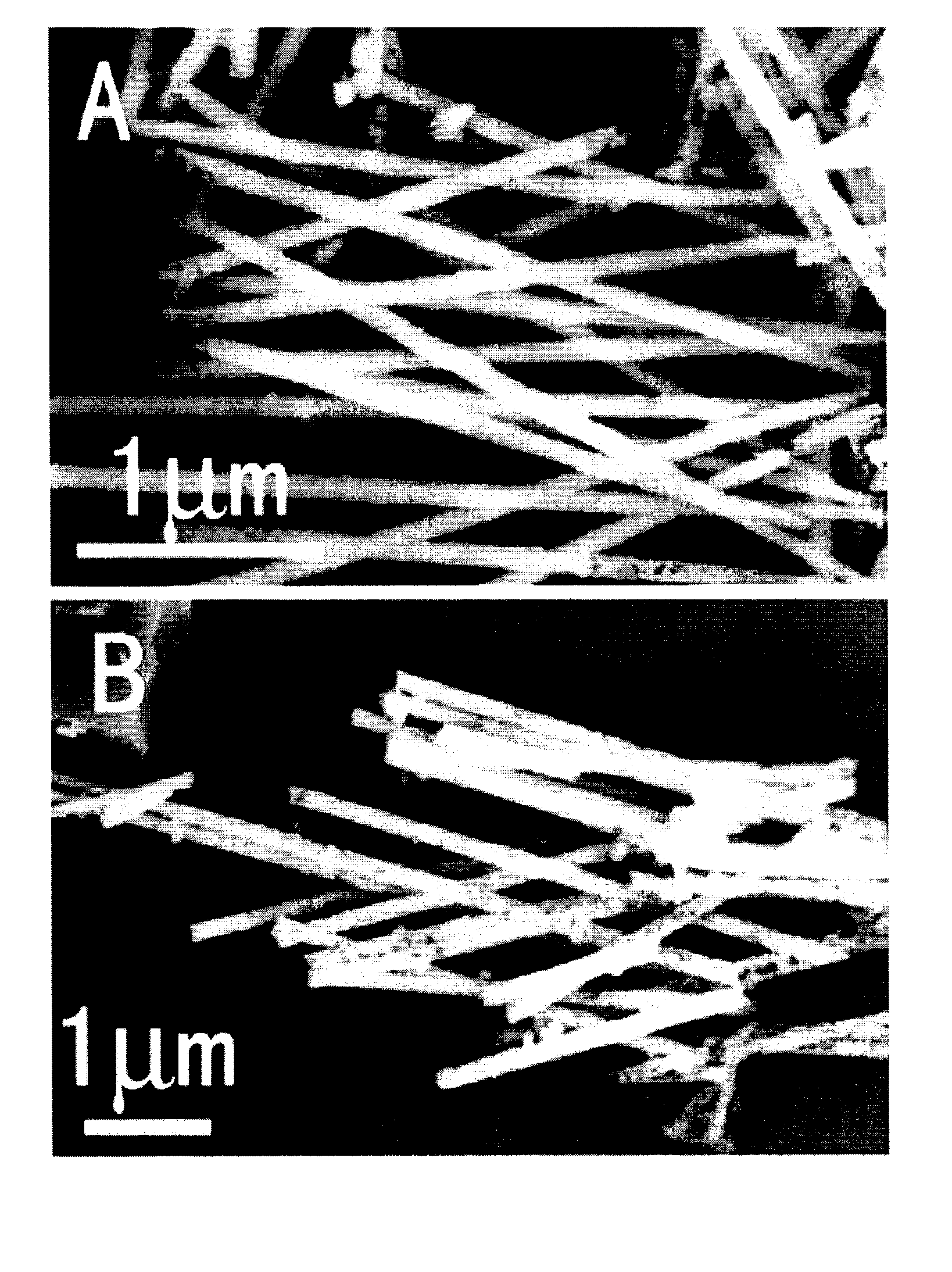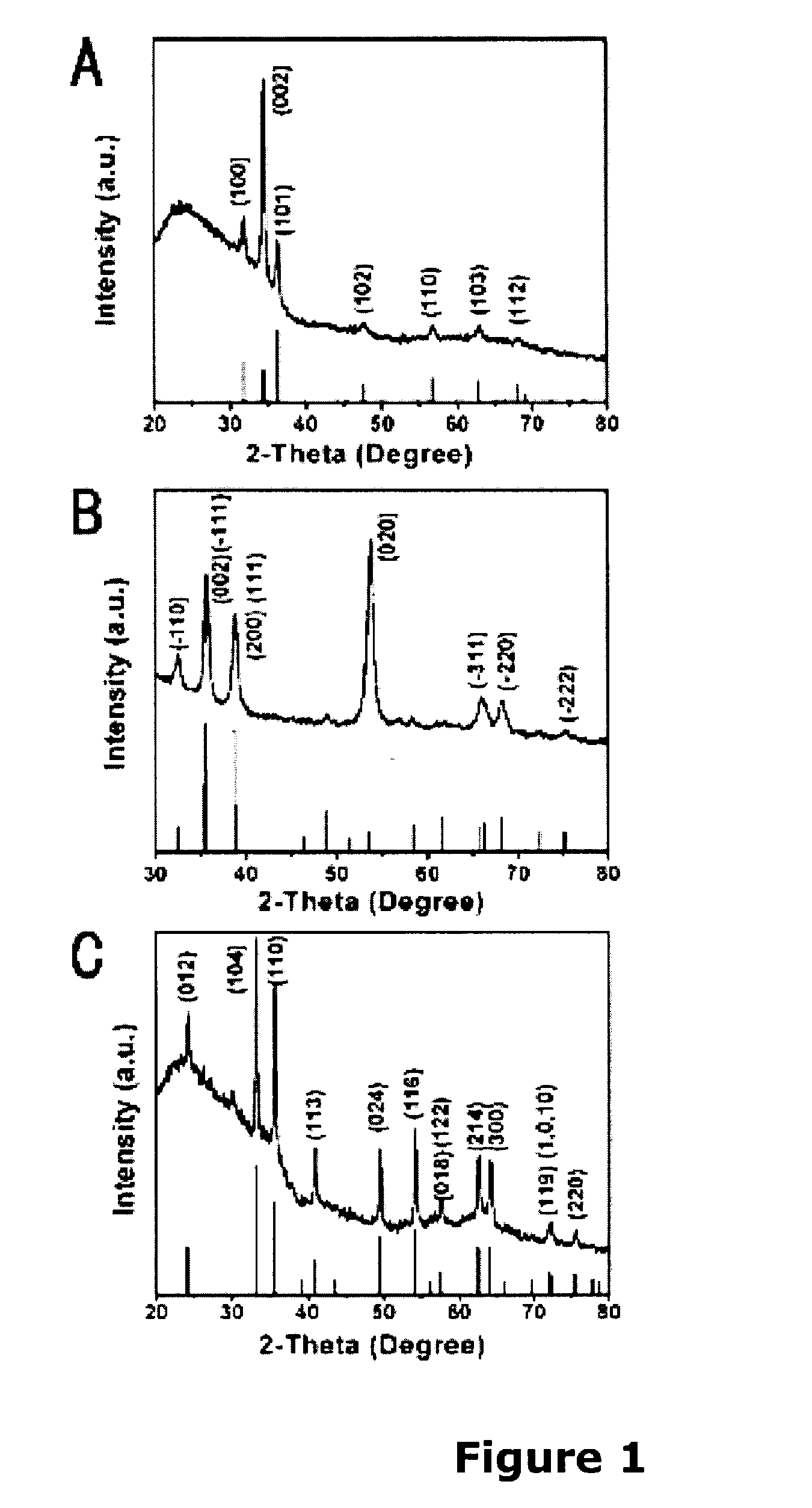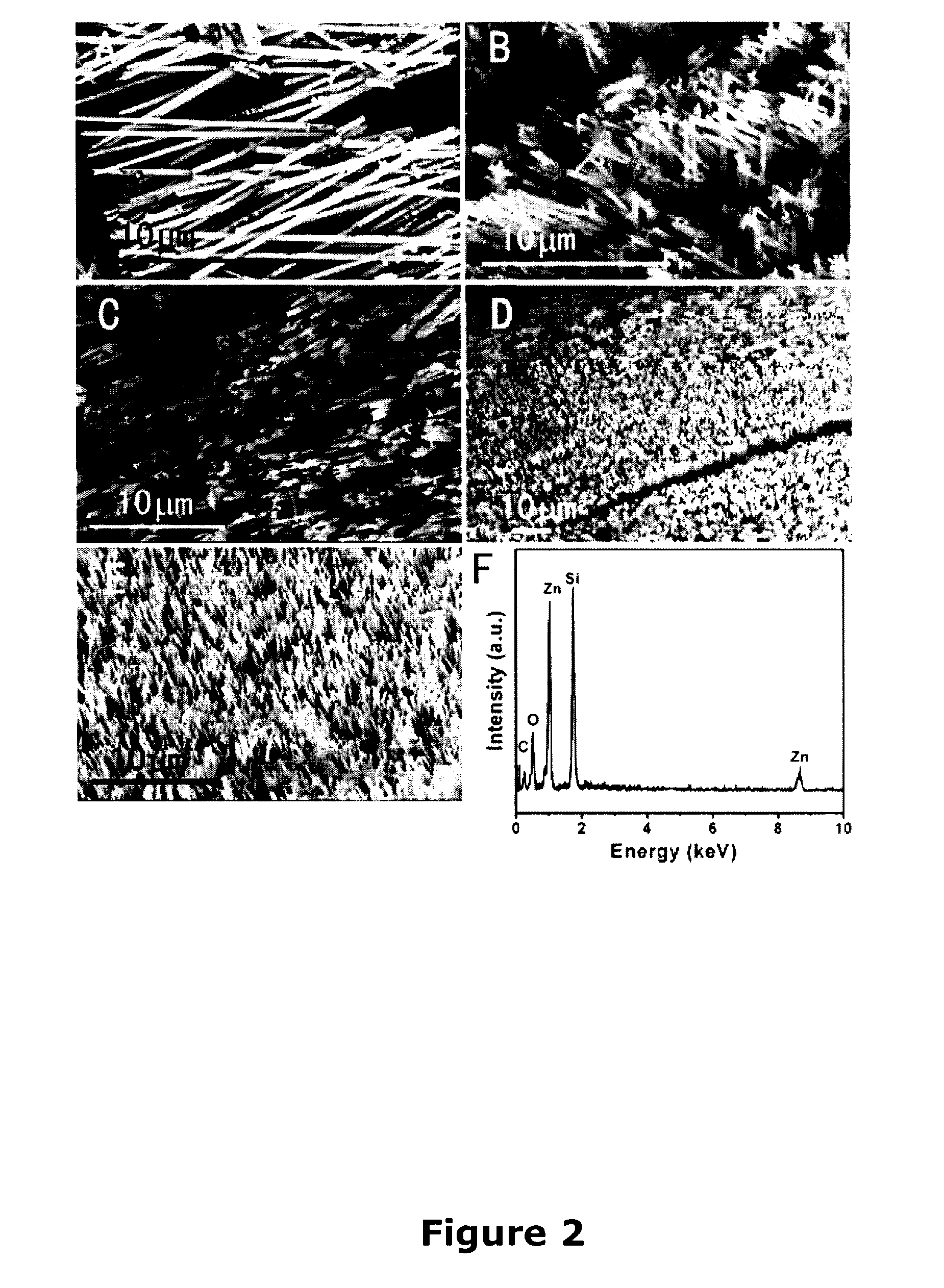Methods of Making Binary Metal Oxide Nanostructures and Methods of Controlling Morphology of Same
a metal oxide nanostructure and morphology technology, applied in the direction of aluminium oxide/hydroxide, metal/metal-oxide/metal-hydroxide catalyst, chromium oxide/hydrate, etc., can solve the problems of limited substrate range, limited method, limited range of substrates, etc., to achieve reliable control of shape, dimensionality, and crystallinity
- Summary
- Abstract
- Description
- Claims
- Application Information
AI Technical Summary
Benefits of technology
Problems solved by technology
Method used
Image
Examples
examples
[0103]The following examples demonstrate the successful synthesis of ZnO nanowires, CuO nanowires, and α-Fe2O3 nanotubes, as well as their corresponding arrays, via a low cost, generalizable, and simplistic template method. Diameters of one-dimensional (1-D) metal oxide nanostructures (˜60-260 nm), measuring micrometers in length, can be reliably and reproducibly controlled by the template pore channel dimensions. Associated vertically aligned arrays have been attached to the surfaces of a number of geometrically significant substrates, such as curved plastic and glass rod motifs. The methodology reported relies on the initial formation of an insoluble metal hydroxide precursor, initially resulting from the reaction of the corresponding metal solution and sodium hydroxide, and its subsequent transformation under mild conditions into the desired metal oxide nanostructures. Size- and shape-dependent optical, magnetic, and catalytic properties of as-prepared 1-D metal oxides were inves...
PUM
| Property | Measurement | Unit |
|---|---|---|
| exciton binding energy | aaaaa | aaaaa |
| temperatures | aaaaa | aaaaa |
| pore sizes | aaaaa | aaaaa |
Abstract
Description
Claims
Application Information
 Login to View More
Login to View More - R&D
- Intellectual Property
- Life Sciences
- Materials
- Tech Scout
- Unparalleled Data Quality
- Higher Quality Content
- 60% Fewer Hallucinations
Browse by: Latest US Patents, China's latest patents, Technical Efficacy Thesaurus, Application Domain, Technology Topic, Popular Technical Reports.
© 2025 PatSnap. All rights reserved.Legal|Privacy policy|Modern Slavery Act Transparency Statement|Sitemap|About US| Contact US: help@patsnap.com



